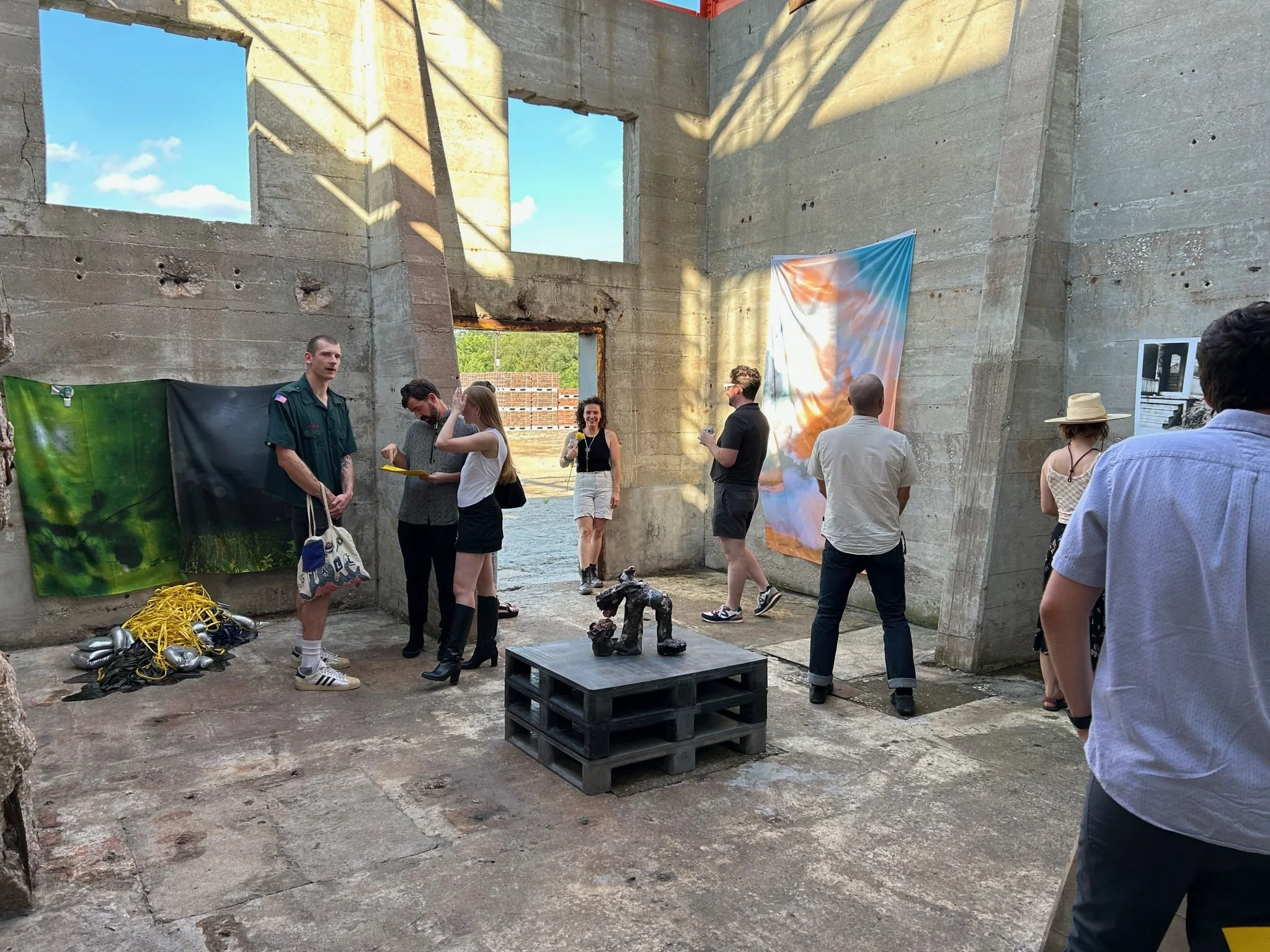2024–2025 Community Report
The Foundation for Counterpublic 2026
– Community Member
Guided by community engagement, each Counterpublic exhibition focuses on a new set of dynamic sites and questions. Embedding ourselves within the fabric of St. Louis, we work alongside residents, community leaders, and artists to shape each three-year exhibition cycle. Listening and learning with our community is essential and ongoing, guiding ongoing partnerships, exhibition sites and themes for the exhibition.
The Community Engagement Report is a milestone moment within our exhibition cycle. The 2024-2025 report shares our process and methods leading to valuable learning through direct conversation with thousands of St. Louis residents over the last 18 months. We spoke with 1,400 St. Louisans of all ages, gathered 775 written responses, and spent over 230 hours across 25 neighborhoods throughout the region. These learnings serve as the foundation for the 2026 exhibition, guiding us in building a future rooted in collaboration, resilience, and transformation.
A heartfelt thank you to the St. Louisans and community collaborators who contributed valuable input for this report.
Don’t have time to read the full report? We've got you.
A summary of key priorities, partnership and exhibitions locations is below.
Counterpublic Community Organizer Abraham Diaz at the IISTL Community Bazaar, Photo by Michael Thomas.
Key Priorities for St. Louisans
Housing Justice – Many residents emphasized the need for affordable housing, tenant protections, and reinvestment in historically disinvested neighborhoods.
Public Spaces Must Be Accessible and Inclusive – Community members expressed a desire for more “third spaces” (or gathering spaces), especially for marginalized groups.
Environmental Sustainability Is a Growing Concern – Issues like flooding, access to green space, and climate resilience as evidenced from the recent tornados and extreme heat were frequently mentioned.
St. Louis Feels Disconnected, but People Want to Change That – Many respondents said the city feels “fragmented,” and they want to see more opportunities for cross-community engagement.
Mississippi Riverfront Needs to Be Acknowledged – While policymakers see it as a future asset, most residents that we surveyed do not discuss it.
– Community Member
2026 Exhibition Partners + Sites
THE VILLE
Anchor Partners: Sumner High School, 4theVille, and more
The Ville and Greater Ville is a historically Black neighborhood that has been a hub of cultural and intellectual life for generations. The exhibition will support local initiatives focused on education, community preservation, and economic investment.
TOWER GROVE
Anchor Partners: International Institute of St. Louis, Tower Grove Park, and South Grand Business District
IISTL is a vital center for St. Louis’s New American communities. Engagement will focus on intergenerational storytelling, cultural exchange, and solidarity networks, engaging IISTL and businesses across the South Grand Business District and activations in Tower Grove Park.
Mississippi Riverfront
Anchor Partners: Gateway South
Gateway South is a development just south of the Arch Grounds, adjacent to the iconic Mural Mile. A site of stark juxtapositions: natural river ecology alongside vacant industrial infrastructure. Policymakers and developers see it as a major investment opportunity, while residents primarily reference a “dying downtown.” Engagement will explore these existing communities, balancing development conversations with the realities of those who call the riverfront home.
National Building Arts Center
Anchor Partners: National Building Arts Center and NON STNDRD
Located in Sauget, IL in an old steel foundry, NBAC has the largest collection of architectural artifacts in the nation. Projects will activate the campus and collection while focusing on climate and ecology.
Museum Hubs
Anchor Partners: Museums and Galleries Across St. Louis
Partnerships with numerous art organizations highlight the region’s thriving cultural ecosystem including the Contemporary Art Museum St. Louis, Kranzberg Arts Foundation, The Luminary, Mildred Lane Kemper Art Museum, Pulitzer Arts Foundation, and Saint Louis Art Museum.
Checking In
The report is a checkpoint—a “middle of the middle” moment. It is an opportunity for us to share what we’ve asked and heard and to open a new loop of dialogue, continuing the journey toward meaningful connection and change. The 2024–2025 Community Report data was taken from work and engagement during December 2023 to November 2024. The report was largely crafted at the end of 2024, before the current political regime change, cuts to vital systems of support and funding for the arts, and the devastating climate catastrophe of the May 16 tornado.
We are grappling with additional questions and responses during this time: What is the role of art during a catastrophe? How can we imagine new models of support? These questions inform our continued work as we take action, including partnerships for the 2026 exhibition and supporting areas impacted by recent tornadoes.
What’s Your Take?
Let us know what you think about the report: What is spot on? What needs more focus? What are you curious about?










